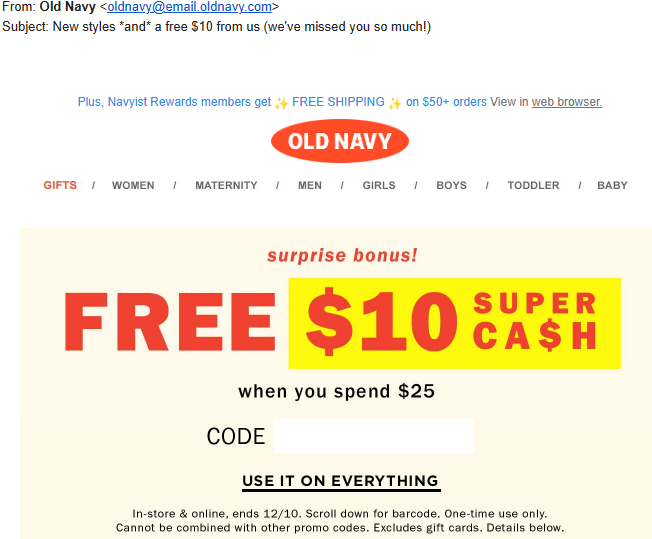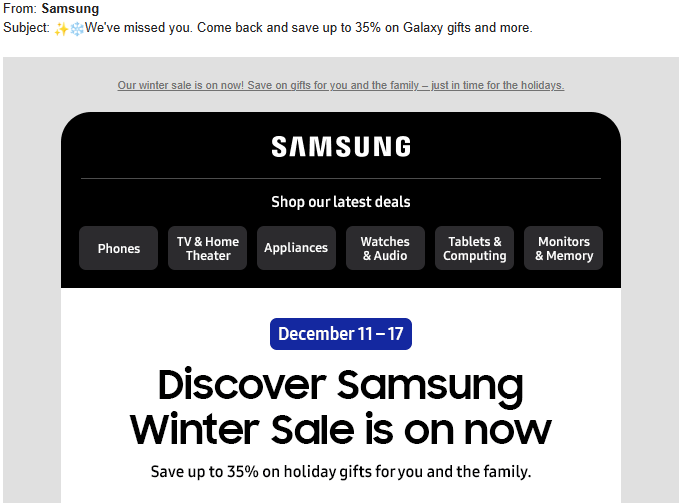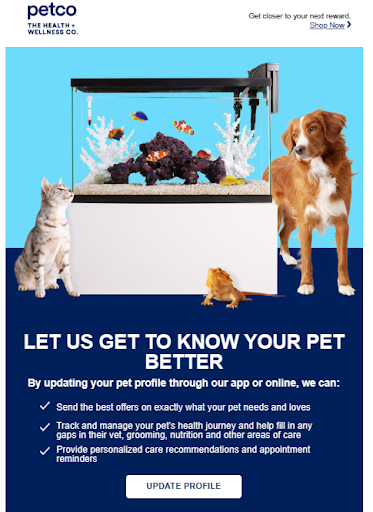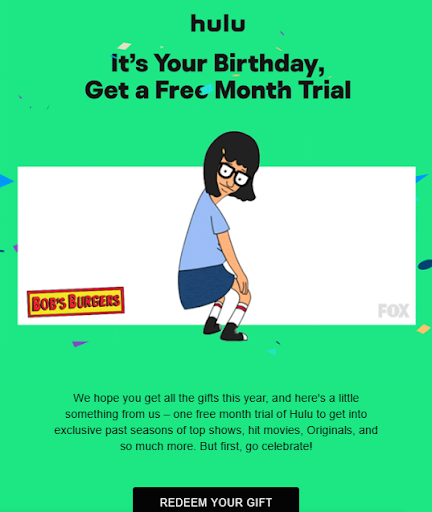
If you’ve noticed a few previously enthusiastic customers are now ignoring your emails, you’re probably wondering how to reattract their attention. After all, many businesses rely on repeat clients — and losing just a tiny percentage can hurt your revenue. Embarking on a campaign of winback emails can help you turn the tide and encourage your customers to buy from you again.
Overview of winback emails
A winback email is precisely what it sounds like — an email sent to clients attempting to win them back (aka reattract them) to your business. You might send a winback email to customers who haven’t opened your recent emails in a few weeks or months. If your winback strategy works, they’ll open your email and act on it by communicating with you or making a purchase.
Winback emails are crucial to any marketing strategy. Most customers will go through ups and downs with their favorite companies. Periods when they’re really engaged (think repeat visits to your website and lots of orders) can give way to slower periods where you don’t receive a high level of interaction. Sometimes, the reason for their disengagement has nothing to do with your organization. They might not require your services at the time, but they’ll come back when they do. Other customers may be waiting for a proverbial carrot to return to your company, which you can provide through a carefully crafted winback email.
Why subscribers stop opening emails
Anytime someone signs up for your mailing list, it sends a positive signal. They’re interested in your company; they want to hear from you, and they’ll likely read your future communications. Everything may go swimmingly for weeks or months until you notice you’ve lost their attention. Emails go unopened, and their read rate drops to zero. But why?
Typically, clients stop opening your emails for one of several reasons:
- You send too many emails, and they’re in overload
- Your emails aren’t tailored to their interests
- They don’t need your products or services right now
- Your emails are going to their spam filter
- The client isn’t using their provided email address anymore
While a winback email campaign won’t work for every situation, it can help lure back clients who still like your company but need an extra push to reengage.
Knowing when it’s time to send a winback email
The time frame for sending a winback email is different for every business. Some organizations can wait longer to start the winback process, while others should begin within days or weeks. Here are some example situations to use as a guide.
- Within one week: You have a one-on-one relationship with the recipient, and you’re expecting to hear back from them quickly about a service you’re helping them with. A few examples where this situation might apply are a realtor helping a client find a new home or a recruiter assisting a client in a job search.
- Within 90 days: Retail and e-commerce businesses often have clients who buy on a regular basis throughout the year but may go several months without making a purchase. Sending a winback email after 90 days of unread communications can help reengage them.
- After 120 days: At the 120-day mark of unread communications, you risk losing your client. This is the point where you’ll want to send a very compelling winback email to bring them back.
- After 150 to 180 days: If your clients haven’t read your emails after six months, they’re likely no longer interested in your brand. You can attempt to contact them one last time, but you should remove them from your mailing list if they don’t take further action.
Benefits of running a winback campaign
The primary advantage of starting a winback campaign is maintaining your customer base. If clients stop reading your emails, visiting your website, or buying products, you’ll see revenue begin to decrease. With an irresistible winback campaign, you can gently pull your clients back and avoid losing them to your competitors.
Measuring the results of your winback campaign is pretty simple. Clients who respond, read your email, or take further action indicate their interest in the company. If a customer doesn’t act, you must make an executive decision. You can keep them on your mailing list for a bit longer or remove them to protect the integrity of your company’s reputation.
Strategies for crafting winback emails
So, how can you create a winback email marketing strategy that delivers results? Start by determining your objectives and how they apply to your client’s needs. Not every winback email needs to result in a sale — maybe you want to confirm your client still wants to hear from you or update their email preferences. Tie your goals to your customer’s prior interest or engagement with your company.
Once you’ve settled on your goals, you can determine the best time to send your email. Most people check their emails in the morning, at lunch, and after work. You can send your email during that timeframe or customize it to fit your needs.
One caveat — if you’re trying to win back a customer who abandoned their cart on your website, time is of the essence. The longer you wait to send a winback (abandoned cart) email, the more likely they will forget what they are trying to buy. Send out your abandoned cart email 24 hours after the customer’s visit.
Here are a few tips for cultivating a solid winback email strategy for your organization.
- Personalize your emails: Customers can usually tell when they receive a generic email. Try to tailor your emails to their tastes and interests.
- Use A/B testing: If winback emails are new for you, try a few different styles and templates to see which one delivers the best results.
- Try email sequencing: Sometimes, you may need to send a few emails before your client takes action. Try creating content that introduces different types of value over time.
- Liven up your messaging: No one likes a dull, lengthy email (save that for the office!). Include a little humor that lifts the mood and grabs their attention.
- Include a few incentives: Coupons, discounts, and gifts are great ways to lure back clients. After all, who doesn’t want to save a few dollars?
- Add social proof: Got a few stellar reviews from other customers you can share? Use them to encourage clients who are unfamiliar with your company.
- Monitor deliverability rates: Pay attention to your deliverability and open rates on winback emails. If the email fails to deliver, it may be inactive, and you should unsubscribe the client to prevent any penalties to your email domain.
Winback email content and structure
Winback emails should be short, compelling, and direct. Use pictures or videos in your email if appropriate. For instance, if you’re sending an abandoned cart email, including photos of the products the client selected helps remind them what they were shopping for.
Use captivating subject lines.
The first thing your client sees is the email’s subject line. Avoid drab and boring subject lines that don’t hold the reader’s attention. A few examples of best winback email subject lines include:
- Get 50% off your next purchase with XYZ Company!
- We miss you! Don’t miss out on our hottest trending products for summer!
- We hate saying goodbye to our favorite customers…
Write personalized content to reengage clients
It’s not always possible to customize every email you write — especially if you have a large subscriber list. However, tailor your winback message to the customer’s interests. Chances are you know a few things about them, like their purchase history or basic demographics. Segment your winback messages for specific customer groups, or use special days, such as their birthday or anniversary, to offer an incentive to come back to your store.
Create urgency and exclusivity
FOMO is real. No one wants to feel left out in the cold, unaware of what’s happening. Use language that suggests clients may be missing out if they don’t take action with you. Include a call to action telling recipients exactly what you want them to do.
Tell subscribers about cancellation or pausing options
In today’s email-centric world, it’s common for people to receive dozens of emails daily from many different companies. If you regularly send multiple emails weekly and notice declining open rates, consider sending a email informing customers of their subscription options. That way, they can choose the content they want to read.
Use good email etiquette
Your email salutations and sign-offs should reflect your company’s voice. Casual salutations work for most retail companies, but keep things professional if you’re in the B2B industry.
Pay attention to grammar
Always proofread your emails before sending them. Spelling and grammar mistakes leave a negative impression with potential clients.
Winback email examples and inspiration
Are you looking for some real-world inspo for your next campaign? Check out these customer winback email examples from Old Navy, Samsung, Petco, and Hulu.

This Old Navy email contains several elements that are important to any winback campaign. The subject line includes a $10 discount incentive and an emotional appeal (“we’ve missed you so much!”). The content includes the coupon and a deadline to use it, encouraging the reader to take quick action.

Another great example comes from Samsung. Like Old Navy, Samsung includes the “We’ve missed you” message in the subject line. It also highlights potential savings of 35% during a short one-week sale.

Petco’s email doesn’t include discounts, but it encourages recipients to update their profile to receive personalized messages. Through customization, Petco can better segment emails to meet client needs and increase open rates.

Hulu’s winback campaign includes a free offer for a one-month trial during the recipient’s birthday month. Birthdays are a fantastic opportunity to build goodwill with prior clients through gifts and exclusive coupons.
Handling responses and feedback
Occasionally, your winback strategy won’t get you the results you’re looking for. Perhaps the recipient had a recent bad experience with your company, or they’re tired of receiving communications from you. If you receive any complaints, address them constructively and positively. If the client requests to unsubscribe from your list, remove them promptly and send them confirmation.
If a customer fails to take action within your targeted timeframe and you receive a delayed reply, don’t ignore their message. Sometimes, people overlook messages that would typically be important to them. If they want to take advantage of a sale you were offering that’s no longer going on, it’s up to you whether to honor the discount. If they’re a valued client, keeping them happy is advantageous.
Take advantage of any client replies or actions to ask for feedback. For instance, if a client uses a discount provided in a winback email, you can include a short survey at the end of the purchase process or send a follow-up message. The more you learn about your clients, the better you can serve them in the future.
Technical aspects of winback email campaigns
While the content of your email entices customers to return, there’s a lot of important stuff going on in the background to consider. For one, email list segmentation is essential. Segmentation allows you to target customers based on their prior shopping habits and behaviors. The more information you can gather about your clients, the easier it is to tailor your winback emails and see results.
Another factor to consider is your email marketing platform. A robust marketing platform like Constant Contact includes customizable winback email templates and automated marketing tools, allowing you to shorten the time it takes to create emails and reach your customers. With Constant Contact, you can monitor your results through our tracking software, allowing you to make adjustments quickly and improve future campaigns.
Start winning back your clients in your next campaign
Now that you know the ins and outs of the best winback emails, it’s time to put your skills to the test! Review your latest email stats and see if there are opportunities to bring clients back to your company. Segment your list, write an engaging message, and wait for the results. If all goes well, you should see some renewed interest — and maybe a few sales!
Not sure how to sequence your email marketing strategy? Check out our comprehensive guide on email drip campaigns.




